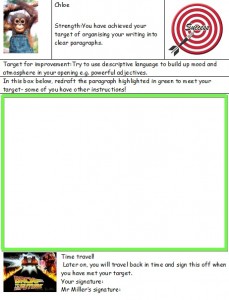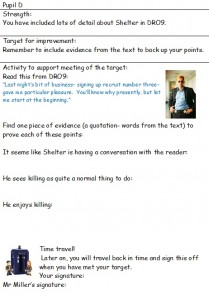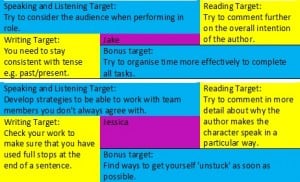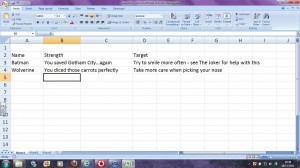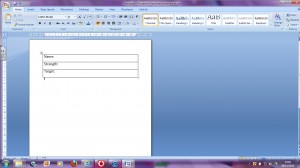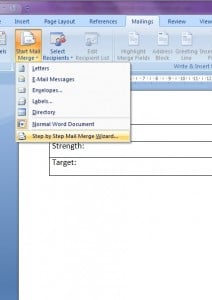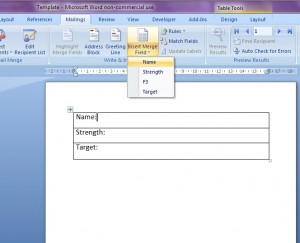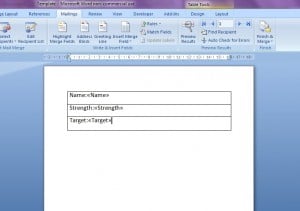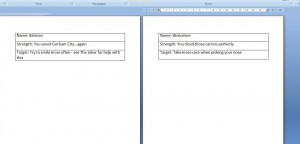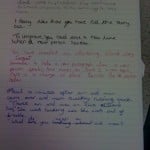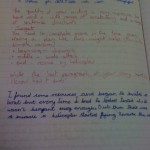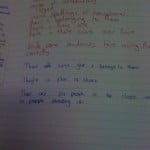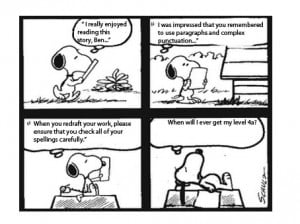For the first time in my 10 years of teaching, I don’t feel the stress of marking and I hope to explain how in this post.
I’ll start by saying there are no quick fixes when it comes to marking. You can’t cut corners. There are some methods to reduce the time spent doing it, but the ways to get on top are more about how to increase the impact of marking. Mainly, it’s about establishing a different relationship between you and marking. Instead of seeing your marking as that horrible thing that you have to do on top of all the real teaching, see it as the most important aspect of that teaching.
Regular, high quality marking will:
- Help students to get better
- Build positive relationships (they see that you care)
- Improve presentation
- Allow you to evaluate teaching
- Make students value what they do (they know you’ll read it)
- Improve behaviour (you are a teacher with high expectations)
You can read my detailed post about the specifics of making written feedback more effective here. Here are my views on how to get on top of marking:
Mark for the students
Forget the book scrutinies and the Ofsted inspections.* Just focus on making your feedback work for you and your students. This means high quality feedback which the students act upon. It means giving them opportunities to meet the targets you set and to use your feedback to develop. Get that right and then you don’t really have to worry about what ‘they’ want to see because your books are going to show that students are learning. You can spend your life trying to second guess what people are looking for but the fact is that no one can argue when students are clearly improving.
I have been involved in looking at colleagues’ exercise books and, trust me, there’s nothing worse than seeing lots and lots of red pen (or green or whatever) which is never read. I’d rather see less of it but the feedback being used effectively. If you ever find yourself having to take home 3 boxes of books because you have received ‘the call’ then I think you have your priorities all wrong.
Marking is planning
I always used to prioritise lesson planning over marking. Now, I prioritise both by ensuring the students act on the feedback. They either complete an activity or redraft-or both. The rest of the lesson is built around any other misconceptions evident in students work. The next few lessons are sorted too because you know what to teach based on the work produced by the whole class. You are saving time because the next lesson is planned and you are making your lessons more efficient because they are truly tailored to what students need to learn. David Didau writes about his ‘marking is planning’ mantra here.
Without marking students’ work, how do you really know what to plan anyway?
Mark regularly but selectively
Be selective in what you mark. There is no point in marking a spelling test that they self marked. I would generally give good quality feedback every 2-3 weeks. Usually that would be for extended writing which is the culmination of planning, drafting, editing, peer marking etc. This isn’t a hard and fast rule by the way- just an estimate. I would also add that you should read everything-it doesn’t take that long. You might find something out that helps build the relationship with that student or you may identify something that you think they need to work on.
Save time on writing out comments
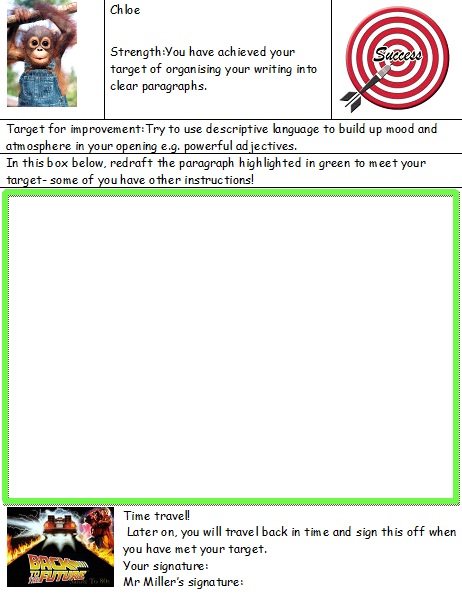 I have written a post on how to use mailmerge here. I honestly think this is the greatest discovery I have made to make my written feedback more efficient.
I have written a post on how to use mailmerge here. I honestly think this is the greatest discovery I have made to make my written feedback more efficient.
I often find that I am writing similar targets for several children. If it is an essay on poetry, for example, then there are a finite amount of targets for improvement. This will be especially common if there is a misconception owing to your teaching. Writing these targets again and again- plus an activity to help them improve takes forever. Using mailmerge means you can type comments, use copy and paste, and print individual target sheets. Have a look at the post for more details.
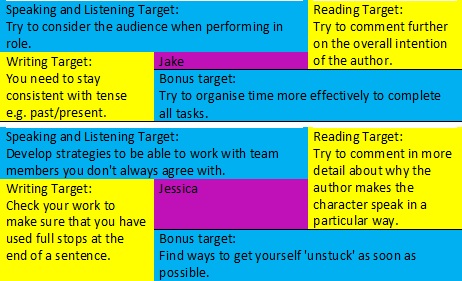 Being able to print out all of my students’ targets like this just saves a lot of faffing in class too. Print them out and glue them on the front of books.
Being able to print out all of my students’ targets like this just saves a lot of faffing in class too. Print them out and glue them on the front of books.
Remember that you are never behind marking
Although I am pretty much on top of my marking, if I were to get behind I wouldn’t waste my time going back in the book and marking work from the past. Unless the students will read it and do something about it then what’s the point? Pick up from where you are with the students and give them feedback based on their most recent work. Of course, you will sometimes have key assignments that you need to mark- controlled assessment is a real pain.
There isn’t going to be a massive negative impact if you haven’t marked some work. There will be a negative impact on your sanity if you try to catch up on everything once you have fallen behind.
Regular marking makes the experience of marking a pleasure
Bear with me! Marking is a chore and I won’t go so far as to say I actually enjoy it. However, I do like when I read a piece of work and the student has ‘got it’. I like the coming together of our efforts over a year and comparing work at the start of the book with work at the end. When marking is like this- and it will be if you get it right- then it makes the time burden slightly more bearable.
*I’m not naive and understand that there are some pressures to conform to school policies etc. There’s nothing wrong with doing those things, especially as some of them are not particularly hard to do e.g. sticking marking policies in books. I have often received helpful feedback on work scrutinies too so we can’t dismiss them entirely.
